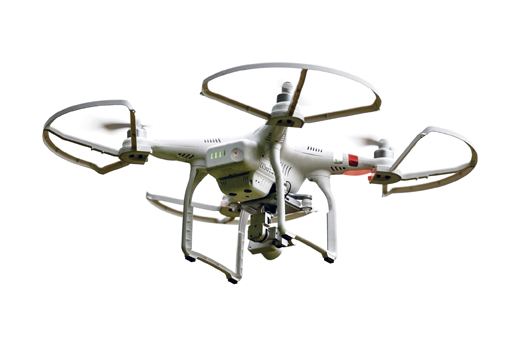New players may be as much of an opportunity as a threat to traditional producers and carriers
As we approach 2018, one could say there is less attention being paid to new insurance products than to new methods for packaging and delivering existing types of coverage. Enterprises such as Lemonade, Trove, Slice, and others have been launched with the premise that new technologies can allow individuals and organizations to arrange risk transfer on their own. If these enterprises succeed to the extent their most bullish proponents expect, they will transform the process of quoting and binding coverage, along with other traditional practices in underwriting, loss control, and claims management.
“Whenever there’s a new technology exposure, there’s always a kind of nervousness about what the market’s reaction will be.”
-Dan Gmelin
Vice President and Head of Architects,
Engineers and Contractors Programs
Argo Pro
One might see a dim future for agents and brokers if this came to pass, but there are reasons to believe the transformation won’t be quite that complete, and the role of agents and brokers would likely grow if it did. To the extent that new applications of insurance technology allow for more timely and precise assessments of risk, there will be an ever-greater need for knowledgeable risk counselors to assist buyers in identifying exposures and deciding among a growing range of options for retaining or transferring those risks.
Thus—to the extent that insurtech subsumes traditional property, general liability, auto liability, and workers compensation coverage—the greater the opportunity for carriers and producers to address other areas of risks for their clients.
Claims perspective
One way to assess new coverage needs is to learn what claims adjusters are seeing as emerging claims.
“Representation and warranties insurance is emerging,” says Elissa Morgan, vice president of the claims support group for the adjusting firm Engle Martin & Associates. “Growth in this coverage is being driven by private equity investors seeking protection against breaches of representations or other assertions in purchase agreements. This coverage provides a measure of comfort in executing large purchase agreements.”
Also, she adds, the growth of the “gig economy” and its reliance on temporary contract workers is leading many companies to seek protection from liability for workers who are injured while performing duties.
“On-demand workers work for various companies across many platforms,” Morgan says. “While typical workers compensation would compensate an injured worker for wages lost for a single job, it would not pay for wages lost from other jobs.”
Today’s networked economy is also expanding the need for contingent income coverage.
“Coverage for contingent locations or suppliers is a concern for the smaller insureds as more and more companies are holding less product on their shelves or in warehouses,” she says. “In the past, contingent income coverage was mostly for larger insureds, but today this coverage is needed at much smaller companies.”
Firearms liability
In December 2016, when Rough Notes last featured emerging products for the coming year, coverage focused on the then-recent release of several insurance programs designed to help commercial accounts with costs and losses arising from an act or threat of violence.
This year, the focus shifts to coverage for persons who face costs and losses for the use of legally owned firearms in self-defense.
For years, the National Rifle Association (NRA) and other organizations of gunowners have sponsored or provided insurance programs that cover civil defense, civil compensation, and criminal defense (under certain circumstances) to members facing civil claims or criminal charges arising from the use of a firearm in self-defense.
Such programs provide legal gunowners with insurance to address the limitations of liability coverage under standard homeowners policies, which exclude coverage for liability arising from any intentional injury, legal or not, and provide no coverage at all for criminal defense.
Independent agents have a new opportunity to provide gunowners’ liability coverage through a firearm liability policy introduced this year by Rockwood Programs, Inc., a Claymont, Delaware-based managing general agent and program administrator.
Rockwood’s firearm liability program, underwritten through Lloyd’s of London and available countrywide in the surplus lines market, provides coverage on a claims-made basis for limits of $50,000 to $5 million; defense costs are paid within the policy limits. The coverages include:
- Legal defense for civil liability claims, including claims arising from the theft of an insured’s firearm
- Indemnity payments for civiljudgments against the insured
- Legal retainer for defense against criminal charges
- Legal defense reimbursement for defense against criminal charges (in the event of exoneration)
- Cost of lost compensation while in court
Compensation for counseling to deal with the trauma of using a gun in self-defense.
Rockwood can also develop plans for gun clubs, hunting clubs, and similar groups.
“We advise our agency partners to propose firearm liability coverage with every homeowners quote they issue,” says Frank Huver, senior vice presidentof Rockwood. “This is an effective way to build discipline into the sales process, differentiate coverage offerings from the competition, and mitigate E&O exposures, as many clients think they have this coverage already.”
Potential mandates
Beyond addressing a current gap in standard personal liability coverage, Rockwood’s firearm liability coverage anticipates an increase in insurance requirements on legal gunowners.
“Recent events, such as the Las Vegas shooting, have prompted lawmakers to consider regulations mandating some type of firearms liability insurance,” Huver says. Among other things, he says, a bill pending in Congress would require individuals to provide proof of coverage as a condition of purchasing a firearm, and that sellers of firearms would be fined for failing to verify that insurance was in place.
According to Huver, coverage under the Rockwood program extends to the named insured, his or her spouse and relatives residing within the named insured’s household, plus non-relatives under age 21 and under the care of a resident relative.
Coverage applies only to the use of firearms that are legal to own within the jurisdiction where the insured lives or an incident occurs, a provision that is one of two principal underwritingcriteria for the program, the other being the applicant’s previous loss history.
One factor that is not considered, says Huver, is the number of weapons owned by an applicant, so long as they are legally owned by the prospective insured.
The significance of an individual “collecting” or “stockpiling” firearms, depending on one’s perspective regarding gun ownership, has come under scrutiny in light of reports that the Las Vegas shooter had acquired dozens of guns and brought several to the hotel where he staged his attack.
Huver observes, however, that “we don’t necessarily see a correlation between the ownership of a number of firearms and a propensity to use them aggressively.”
He emphasizes that Rockwood’s firearm liability coverage program covers insureds for “only the use of a legally owned gun in the defense of oneself or others.”
To that end, Huver says the criminal defense retainer is available only if the insured pleads not guilty to a charge, and reimbursement of reasonable legal expenses is paid only if he or she is ultimately found not guilty.
 Drone coverage
Drone coverage
While insurance for firearms may be venturing into uncharted areas of liability coverage, insurance for unmanned aerial vehicles (UAVs, aka “drones”) is expanding into professional exposures that are growing rapidly as UAVs become an integral part of commercial operations, especially those occurring outdoors.
Coverage for errors and omissions arising from the use of aerial drones has become an integral component of the Argo Pro’s Architects & Engineers PROtect policies, according to Dan Gmelin, Argo’s vice president and head of architects, engineers and contractors programs.
The use of drones in commercial operations has grown exponentially since it was legalized by the Federal Aviation Administration (FAA) in 2016. Now, says Gmelin, drones are routinely used for surveying, and to inspect and capture information on topography, pipelines, bridges, and telecommunications facilities.
“Drones allow for safer and more efficient inspections of hazards, such as bridge damage, as well as inspections in inaccessible areas,” he says. Also, he adds, “architects will now produce digital renderings of structures, whether new or existing, and use drones to determine if construction is proceeding in line with the plans as rendered.”
Drone use has become so commonplace, says Gmelin, that applicants and insureds may no longer think to inform their professional liability insurer about the extent of their use of drones. “No one points it out anymore,” he says, adding that the responsibility lies with underwriters to determine the nature and extent of drone use by an account.
Drone technology has advanced to the point that previous liability concerns over collisions and invasion of privacy, while not eliminated, have become subordinate to concerns over first- and third-party cyber exposure (in the event a drone is lost, stolen, or damaged) and reputational damage arising from such a loss or other misuse of a drone.
“Whenever there’s a new technology exposure, there’s always a kind of nervousness about what the market’s reaction will be,” he says.
The author
Joseph S. Harrington, CPCU, is an independent business writer specializing in property and casualty insurance coverages and operations. For 21 years, Joe was the communications director for the American Association of Insurance Services (AAIS), a P-C advisory organization. Prior to that, Joe worked in journalism and as a reporter and editor in financial services. Dan Gmelin Vice President and Head of Architects, Engineers and Contractors Programs Argo Group





